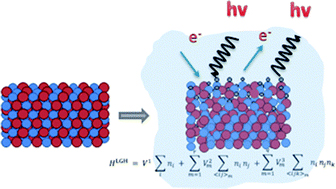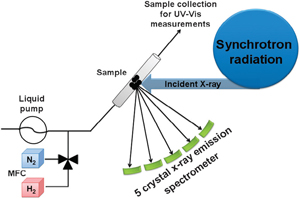Challenge and progress: palladium-catalyzed sp3 C–H activation
Hu Li, Bi-Jie Li and Zhang-Jie Shi
Catal. Sci. Technol., 2011, 1, 191-206
DOI: 10.1039/C0CY00076K
Metal–organic frameworks as heterogeneous catalysts for oxidation reactions
Amarajothi Dhakshinamoorthy, Mercedes Alvaro and Hermenegildo Garcia
Catal. Sci. Technol., 2011, 1, 856-867
DOI: 10.1039/C1CY00068C
Superparamagnetic nanoparticles for asymmetric catalysis—a perfect match
Kalluri V. S. Ranganath and Frank Glorius
Catal. Sci. Technol., 2011, 1, 13-22
DOI: 10.1039/C0CY00069H
Heterogeneous catalysis of the glycerol hydrogenolysis
Yoshinao Nakagawa and Keiichi Tomishige
Catal. Sci. Technol., 2011, 1, 179-190
DOI: 10.1039/C0CY00054J
Design of hierarchical zeolite catalysts by desilication
Danny Verboekend and Javier Pérez-Ramírez
Catal. Sci. Technol., 2011, 1, 879-890
DOI: 10.1039/C1CY00150G
Graphene-based materials for catalysis
Bruno F. Machado and Philippe Serp
Catal. Sci. Technol., 2012, 2, 54-75
DOI: 10.1039/C1CY00361E
Well-defined copper(I) complexes for Click azide–alkyne cycloaddition reactions: one Click beyond
Silvia Díez-González
Catal. Sci. Technol., 2011, 1, 166-178
DOI: 10.1039/C0CY00064G
Chemocatalytic conversion of cellulose: opportunities, advances and pitfalls
Jan A. Geboers, Stijn Van de Vyver, Roselinde Ooms, Beau Op de Beeck, Pierre A. Jacobs and Bert F. Sels
Catal. Sci. Technol., 2011, 1, 714-726
DOI: 10.1039/C1CY00093D
Towards near zero-sulfur liquid fuels: a perspective review
Barbara Pawelec, Rufino M. Navarro, José Miguel Campos-Martin and José L. G. Fierro
Catal. Sci. Technol., 2011, 1, 23-42
DOI: 10.1039/C0CY00049C
Two-dimensional zeolites: dream or reality?
Wieslaw J. Roth and Jiří Čejka
Catal. Sci. Technol., 2011, 1, 43-53
DOI: 10.1039/C0CY00027B
To keep up with the latest news in Catalysis Science & Technology you can like us on facebook or follow us on twitter
 CatalysisVolume 24
CatalysisVolume 24


















